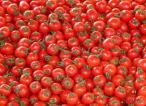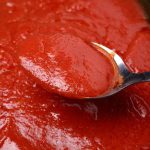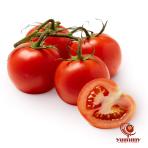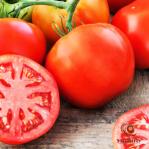Buy easy made tomato paste + best price
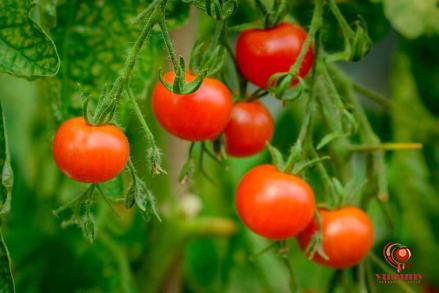
In the world of cooking, there are certain ingredients that can elevate the flavor of a dish instantly. One such ingredient is tomato paste. This thick and concentrated form of tomatoes adds a rich and deep umami flavor to a wide variety of dishes, from pasta sauces to soups and stews. While store-bought tomato paste is readily available, making your own at home is not only easy but also allows you to control the quality of the ingredients used. In this comprehensive guide, we will explore the process of making easy homemade tomato paste, its benefits, and ways to incorporate it into your cooking repertoire. ## The Basics of Tomato Paste Tomato paste is essentially concentrated tomatoes that have been cooked down to remove most of the moisture content, resulting in a thick and intensely flavored product. It serves as a convenient way to add depth and richness to dishes without having to cook down fresh tomatoes for hours. Tomato paste is a staple in many cuisines around the world, from Italian pasta sauces to Middle Eastern stews and Indian curries. ## Benefits of Making Tomato Paste at Home There are several advantages to making your own tomato paste at home. Firstly, you have complete control over the quality of the ingredients used. By choosing ripe and flavorful tomatoes, you can enhance the taste of the final product. Secondly, homemade tomato paste is free from any additives or preservatives that are often found in store-bought versions. This ensures a pure and natural flavor without any artificial components.

.
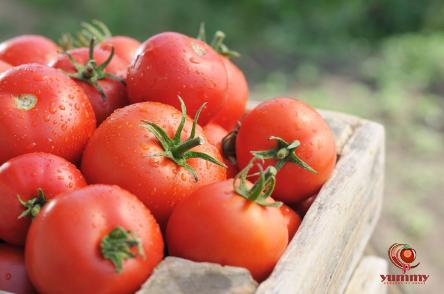 Additionally, making your own tomato paste can be a cost-effective option, especially when tomatoes are in season and available in abundance. ## Easy Steps to Make Tomato Paste at Home Making tomato paste at home is a straightforward process that requires minimal ingredients and equipment. Here is a step-by-step guide to creating your own delicious tomato paste: 1. **Selecting the Right Tomatoes:** Choose ripe and flavorful tomatoes for the best results. Roma tomatoes are commonly used for making tomato paste due to their low moisture content and robust flavor. However, you can also experiment with other varieties based on personal preference. 2. **Preparation:** Wash the tomatoes thoroughly and remove any stems. Cut the tomatoes into quarters or halves, depending on their size. 3. **Cooking:** Place the tomatoes in a large pot and cook them over low heat, stirring occasionally to prevent sticking. As the tomatoes cook down, their natural sugars will caramelize, intensifying the flavor of the paste. 4. **Straining:** Once the tomatoes have cooked down to a thick consistency, pass them through a food mill or sieve to remove the skins and seeds. This step will help achieve a smooth and creamy texture for the tomato paste. 5. **Reducing:** Return the strained tomato puree to the pot and continue cooking over low heat until it reaches the desired thickness. The paste should be thick enough to coat the back of a spoon without being runny. 6. **Cooling and Storing:** Allow the tomato paste to cool completely before transferring it to clean and sterilized jars. Store the tomato paste in the refrigerator for immediate use or freeze it for long-term storage. ## Tips for Enhancing Homemade Tomato Paste While basic homemade tomato paste is delicious on its own, there are several ways to enhance its flavor and versatility: 1. **Seasoning:** Add herbs and spices such as garlic, oregano, basil, or red pepper flakes to the tomato paste while cooking for additional flavor depth. 2. **Roasting:** Roasting the tomatoes before cooking them down can add a smoky and caramelized flavor to the tomato paste.
Additionally, making your own tomato paste can be a cost-effective option, especially when tomatoes are in season and available in abundance. ## Easy Steps to Make Tomato Paste at Home Making tomato paste at home is a straightforward process that requires minimal ingredients and equipment. Here is a step-by-step guide to creating your own delicious tomato paste: 1. **Selecting the Right Tomatoes:** Choose ripe and flavorful tomatoes for the best results. Roma tomatoes are commonly used for making tomato paste due to their low moisture content and robust flavor. However, you can also experiment with other varieties based on personal preference. 2. **Preparation:** Wash the tomatoes thoroughly and remove any stems. Cut the tomatoes into quarters or halves, depending on their size. 3. **Cooking:** Place the tomatoes in a large pot and cook them over low heat, stirring occasionally to prevent sticking. As the tomatoes cook down, their natural sugars will caramelize, intensifying the flavor of the paste. 4. **Straining:** Once the tomatoes have cooked down to a thick consistency, pass them through a food mill or sieve to remove the skins and seeds. This step will help achieve a smooth and creamy texture for the tomato paste. 5. **Reducing:** Return the strained tomato puree to the pot and continue cooking over low heat until it reaches the desired thickness. The paste should be thick enough to coat the back of a spoon without being runny. 6. **Cooling and Storing:** Allow the tomato paste to cool completely before transferring it to clean and sterilized jars. Store the tomato paste in the refrigerator for immediate use or freeze it for long-term storage. ## Tips for Enhancing Homemade Tomato Paste While basic homemade tomato paste is delicious on its own, there are several ways to enhance its flavor and versatility: 1. **Seasoning:** Add herbs and spices such as garlic, oregano, basil, or red pepper flakes to the tomato paste while cooking for additional flavor depth. 2. **Roasting:** Roasting the tomatoes before cooking them down can add a smoky and caramelized flavor to the tomato paste.
..
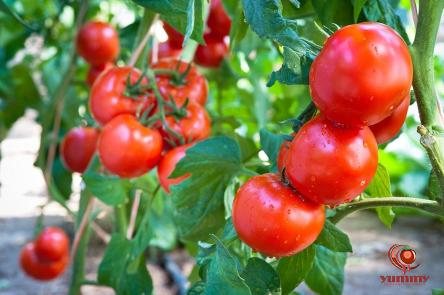 3. **Acidity:** Adding a splash of vinegar or lemon juice to the tomato paste can help balance the sweetness of the tomatoes and add brightness to the dish. 4. **Freezing:** Portion the tomato paste into ice cube trays for easy portioning and use in recipes. Frozen tomato paste can be stored for several months and used as needed. ## Using Homemade Tomato Paste in Your Cooking Homemade tomato paste is a versatile ingredient that can be used in a wide range of dishes. Here are some creative ways to incorporate it into your cooking: 1. **Pasta Sauces:** Add a spoonful of tomato paste to your pasta sauces for an extra depth of flavor and richness. 2. **Soups and Stews:** Stir tomato paste into soups and stews to thicken the consistency and add a savory note to the dish. 3. **Marinades:** Create flavorful marinades for meats and vegetables by combining tomato paste with herbs, spices, and citrus juices. 4. **Pizza Sauce:** Use homemade tomato paste as a base for pizza sauce, spreading it on the dough before adding toppings for a burst of intense tomato flavor. 5. **Curries and Tagines:** Tomato paste can add complexity to Indian curries and Moroccan tagines, enhancing the overall taste of the dish. ## In Conclusion Homemade tomato paste is a simple yet versatile ingredient that can elevate your cooking to new heights. By following the easy steps outlined in this guide, you can create your own flavorful and natural tomato paste at home. Experiment with different varieties of tomatoes, seasonings, and cooking techniques to customize the taste of your tomato paste to suit your preferences. Whether used as a base for sauces, soups, or marinades, homemade tomato paste is sure to become a staple in your kitchen repertoire. So, roll up your sleeves, grab some ripe tomatoes, and start creating your own delicious tomato paste today!
3. **Acidity:** Adding a splash of vinegar or lemon juice to the tomato paste can help balance the sweetness of the tomatoes and add brightness to the dish. 4. **Freezing:** Portion the tomato paste into ice cube trays for easy portioning and use in recipes. Frozen tomato paste can be stored for several months and used as needed. ## Using Homemade Tomato Paste in Your Cooking Homemade tomato paste is a versatile ingredient that can be used in a wide range of dishes. Here are some creative ways to incorporate it into your cooking: 1. **Pasta Sauces:** Add a spoonful of tomato paste to your pasta sauces for an extra depth of flavor and richness. 2. **Soups and Stews:** Stir tomato paste into soups and stews to thicken the consistency and add a savory note to the dish. 3. **Marinades:** Create flavorful marinades for meats and vegetables by combining tomato paste with herbs, spices, and citrus juices. 4. **Pizza Sauce:** Use homemade tomato paste as a base for pizza sauce, spreading it on the dough before adding toppings for a burst of intense tomato flavor. 5. **Curries and Tagines:** Tomato paste can add complexity to Indian curries and Moroccan tagines, enhancing the overall taste of the dish. ## In Conclusion Homemade tomato paste is a simple yet versatile ingredient that can elevate your cooking to new heights. By following the easy steps outlined in this guide, you can create your own flavorful and natural tomato paste at home. Experiment with different varieties of tomatoes, seasonings, and cooking techniques to customize the taste of your tomato paste to suit your preferences. Whether used as a base for sauces, soups, or marinades, homemade tomato paste is sure to become a staple in your kitchen repertoire. So, roll up your sleeves, grab some ripe tomatoes, and start creating your own delicious tomato paste today!
…
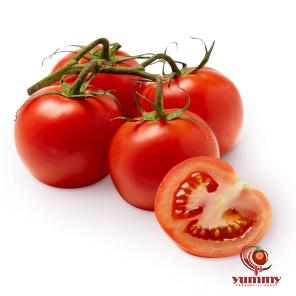 ## Additional Information and FAQs ### Storing Homemade Tomato Paste Homemade tomato paste can be stored in airtight containers in the refrigerator for up to a week. For longer storage, you can freeze the tomato paste in ice cube trays or small containers. When needed, simply thaw out the amount required for your recipe. ### Nutritional Benefits of Tomato Paste Tomato paste is not only a flavorful ingredient but also packs a nutritional punch. It is rich in vitamins A and C, as well as antioxidants such as lycopene, which has been linked to numerous health benefits, including reducing the risk of heart disease and certain types of cancer. ### Troubleshooting Tips If your homemade tomato paste turns out too runny, simply continue cooking it over low heat until it reaches the desired thickness. On the other hand, if the paste becomes too thick, you can add a splash of water or broth to loosen it up. ### Difference Between Tomato Paste and Tomato Sauce While tomato paste is a concentrated form of tomatoes, tomato sauce is a thinner and more liquid product that often contains additional ingredients such as onions, garlic, and herbs. Tomato paste is typically used as a base for sauces and soups, while tomato sauce is a ready-to-use product for recipes that require a saucy consistency. ### Sustainability and Eco-Friendly Practices Making your own tomato paste at home can also be a sustainable choice. By using fresh and locally sourced tomatoes, you can reduce your carbon footprint associated with transportation and packaging. Additionally, you can minimize food waste by utilizing ripe tomatoes that may otherwise go unused. ### Easy Tomato Paste Recipes to Try – **Homemade Marinara Sauce:** Combine homemade tomato paste with garlic, onions, herbs, and a splash of red wine for a classic marinara sauce that pairs well with pasta dishes. – **Tomato Basil Soup:** Create a comforting tomato basil soup by simmering homemade tomato paste with broth, fresh basil, and a touch of cream for a creamy and satisfying meal. – **Spicy Tomato Chutney:** Add a kick to your condiment collection by making a spicy tomato chutney with homemade tomato paste, chili peppers, and vinegar for a tangy and flavorful spread.
## Additional Information and FAQs ### Storing Homemade Tomato Paste Homemade tomato paste can be stored in airtight containers in the refrigerator for up to a week. For longer storage, you can freeze the tomato paste in ice cube trays or small containers. When needed, simply thaw out the amount required for your recipe. ### Nutritional Benefits of Tomato Paste Tomato paste is not only a flavorful ingredient but also packs a nutritional punch. It is rich in vitamins A and C, as well as antioxidants such as lycopene, which has been linked to numerous health benefits, including reducing the risk of heart disease and certain types of cancer. ### Troubleshooting Tips If your homemade tomato paste turns out too runny, simply continue cooking it over low heat until it reaches the desired thickness. On the other hand, if the paste becomes too thick, you can add a splash of water or broth to loosen it up. ### Difference Between Tomato Paste and Tomato Sauce While tomato paste is a concentrated form of tomatoes, tomato sauce is a thinner and more liquid product that often contains additional ingredients such as onions, garlic, and herbs. Tomato paste is typically used as a base for sauces and soups, while tomato sauce is a ready-to-use product for recipes that require a saucy consistency. ### Sustainability and Eco-Friendly Practices Making your own tomato paste at home can also be a sustainable choice. By using fresh and locally sourced tomatoes, you can reduce your carbon footprint associated with transportation and packaging. Additionally, you can minimize food waste by utilizing ripe tomatoes that may otherwise go unused. ### Easy Tomato Paste Recipes to Try – **Homemade Marinara Sauce:** Combine homemade tomato paste with garlic, onions, herbs, and a splash of red wine for a classic marinara sauce that pairs well with pasta dishes. – **Tomato Basil Soup:** Create a comforting tomato basil soup by simmering homemade tomato paste with broth, fresh basil, and a touch of cream for a creamy and satisfying meal. – **Spicy Tomato Chutney:** Add a kick to your condiment collection by making a spicy tomato chutney with homemade tomato paste, chili peppers, and vinegar for a tangy and flavorful spread.


 Phone number:
Phone number:  WhatsApp Response:
WhatsApp Response: